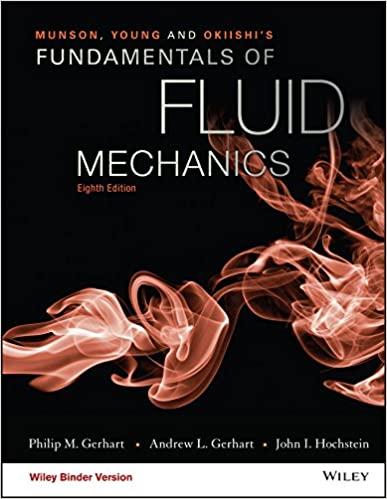A 250-ft-high building has a 6.065-in.-diameter steel standpipe and a (100-mathrm{ft})-long (2 frac{9}{16})-in. diameter fire hose on
Question:
A 250-ft-high building has a 6.065-in.-diameter steel standpipe and a \(100-\mathrm{ft}\)-long \(2 \frac{9}{16}\)-in. diameter fire hose on each floor. The nearest fireplug is \(100 \mathrm{ft}\) from the standpipe's ground-level connection. Assume that fire-fighters connect a 6-in.-diameter, 50 -ft-long fire hose from the fireplug to the fire truck and a 4-in.-diameter, 50 - \(\mathrm{ft}\)-long fire hose from the fire truck to the standpipe's groundlevel connection. The National Fire Protection Association (NFPA) requires that a minimum pressure of \(65 \mathrm{psig}\) be maintained at the connection of the \(2 \frac{9}{16}\)-in.-diameter hose and the standpipe while maintaining a flow rate of \(500 \mathrm{gal} / \mathrm{min}\) through the fire hose. What pressure rise must the pump on the fire engine supply to satisfy the NFPA requirement for this building? The fire hydrant water pressure is \(80 \mathrm{psig}\) and the water temperature is \(60^{\circ} \mathrm{F}\). The connections are threaded.
Step by Step Answer:

Munson Young And Okiishi's Fundamentals Of Fluid Mechanics
ISBN: 9781119080701
8th Edition
Authors: Philip M. Gerhart, Andrew L. Gerhart, John I. Hochstein





